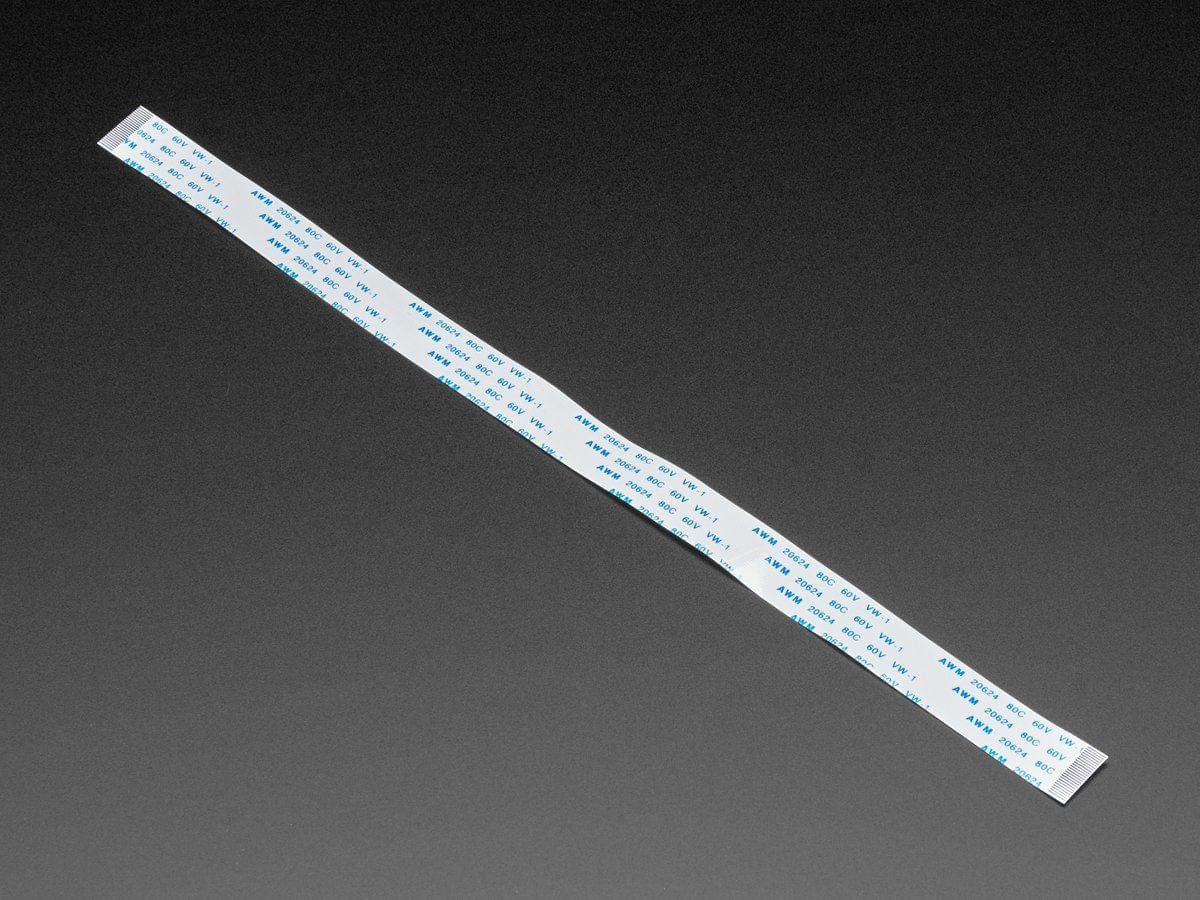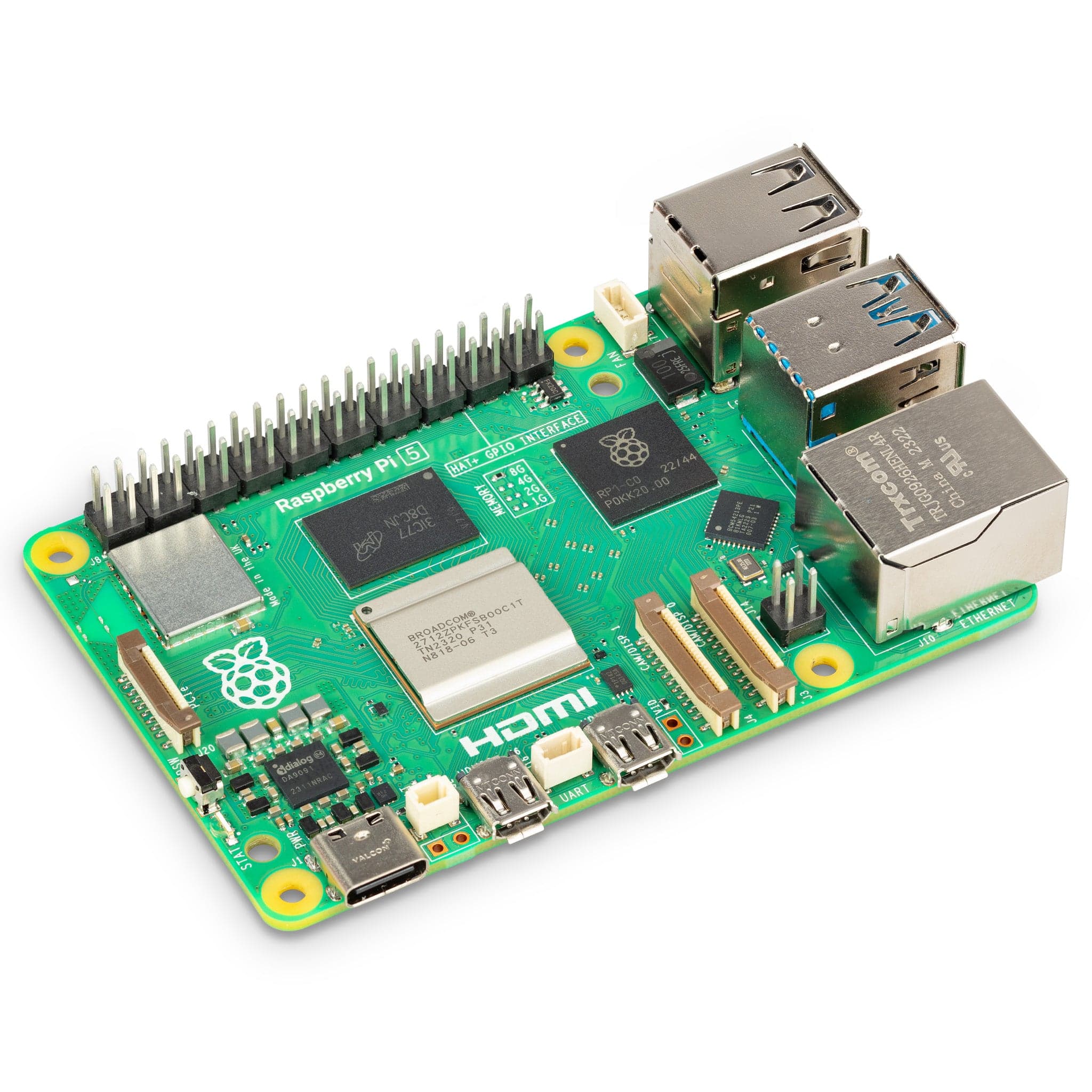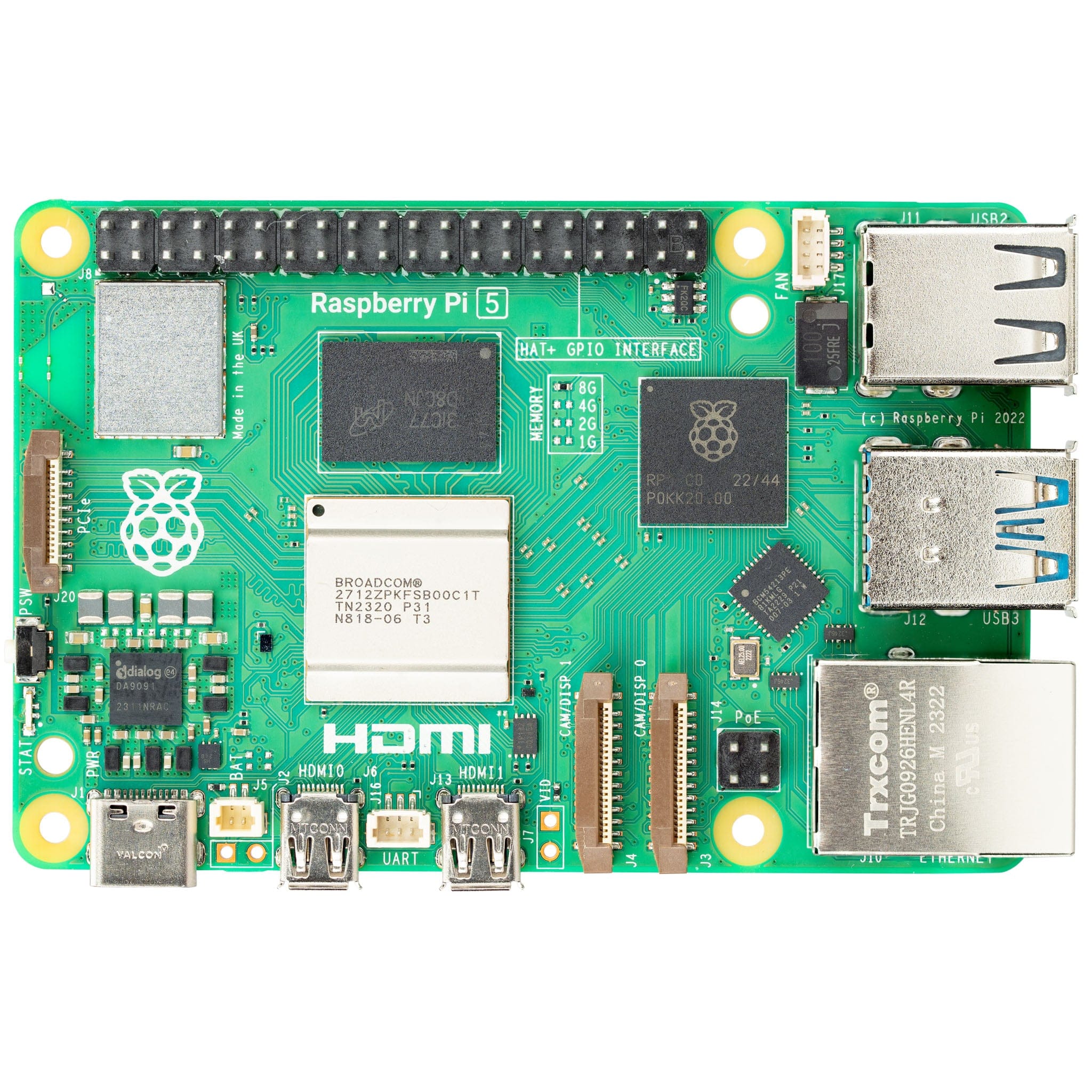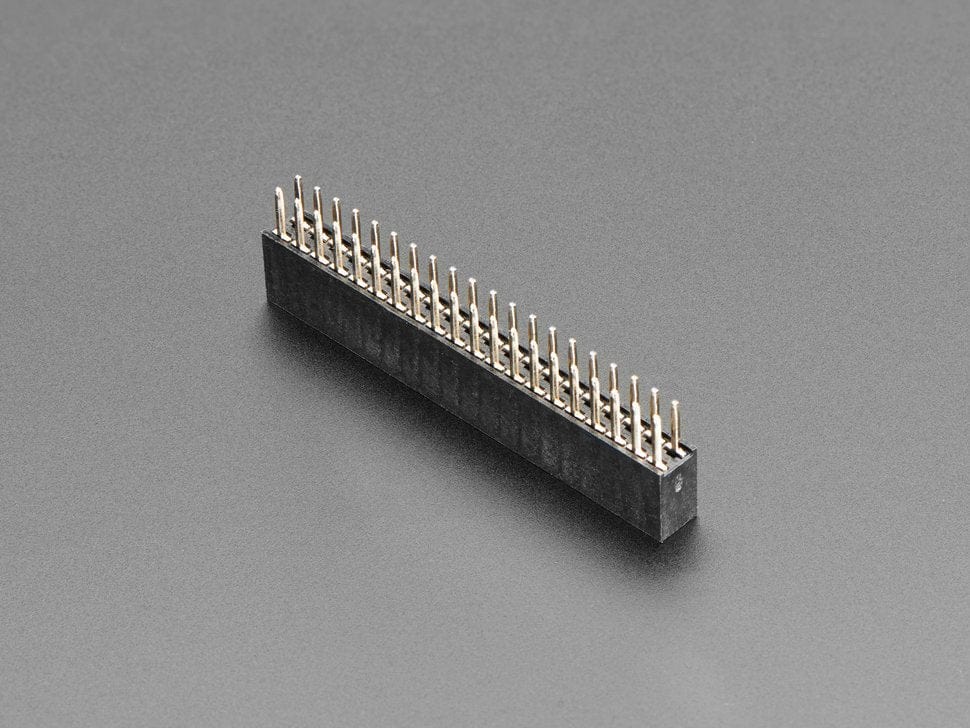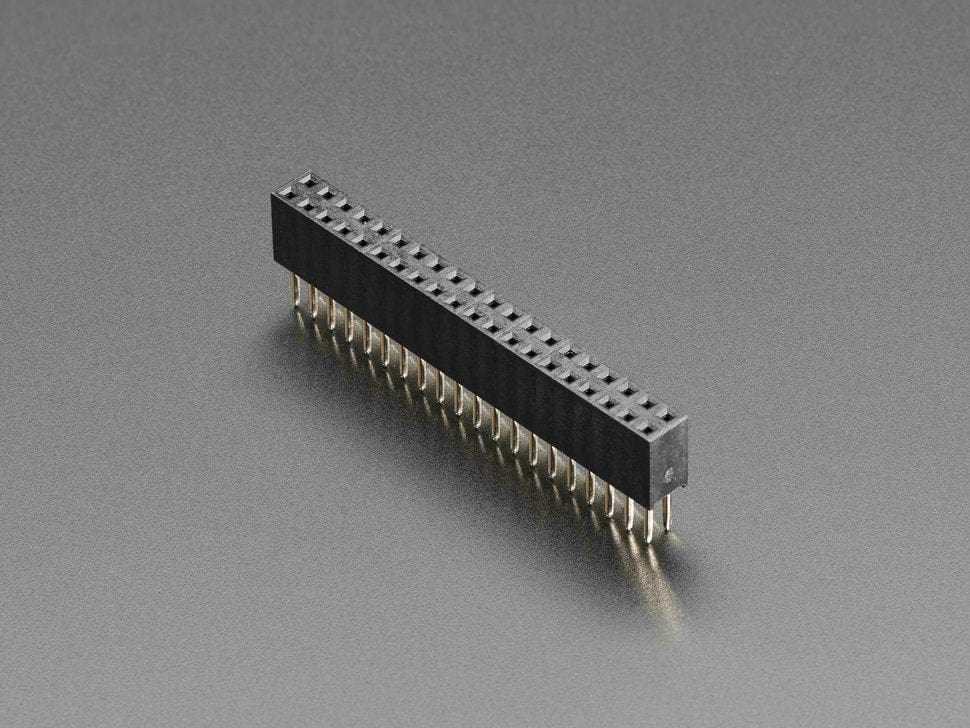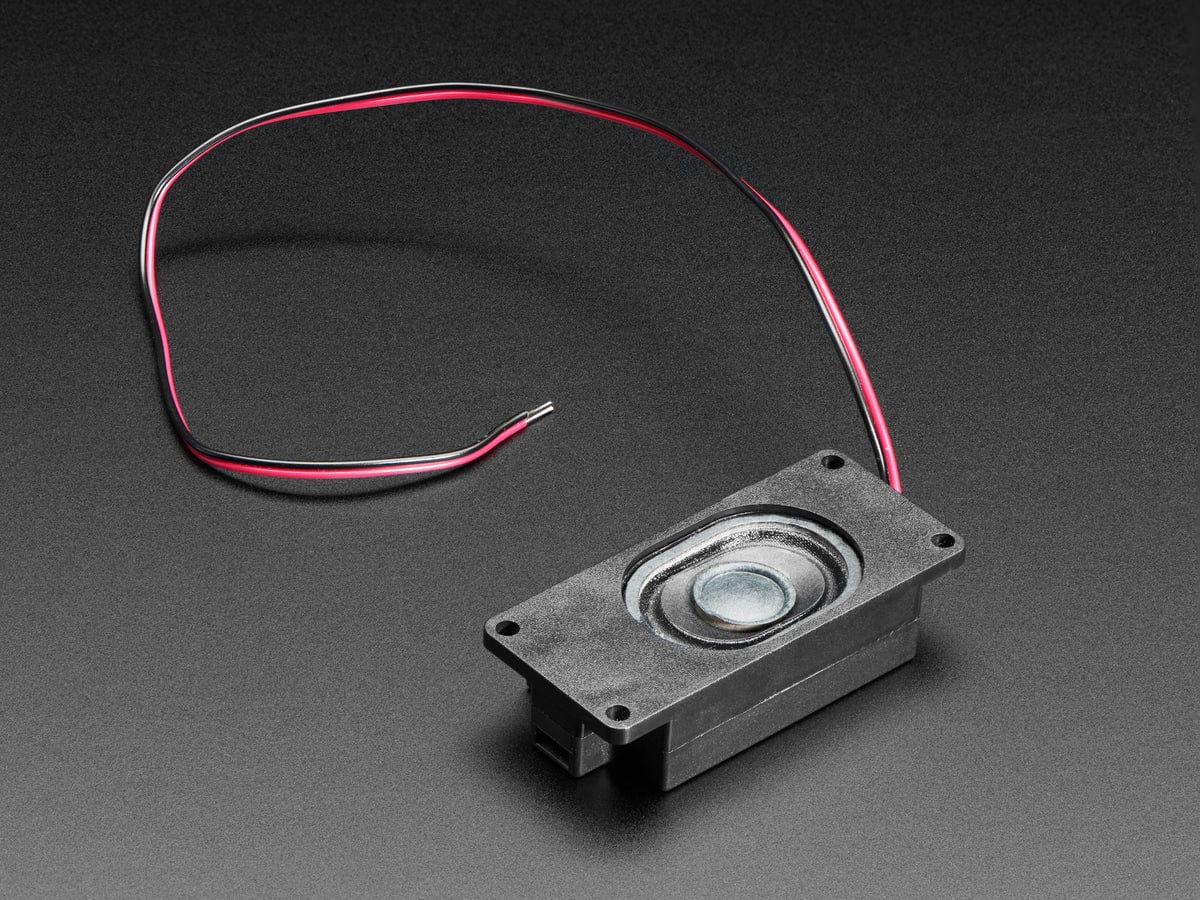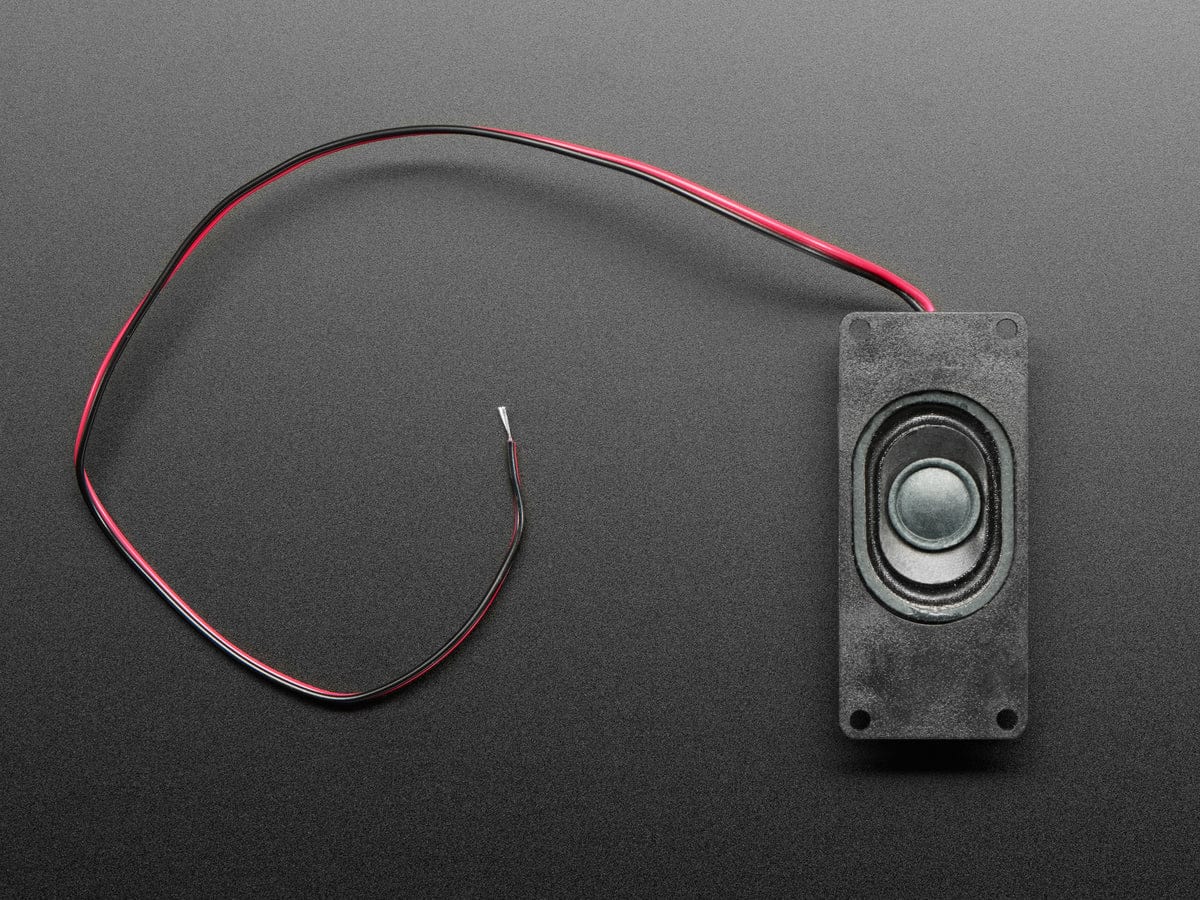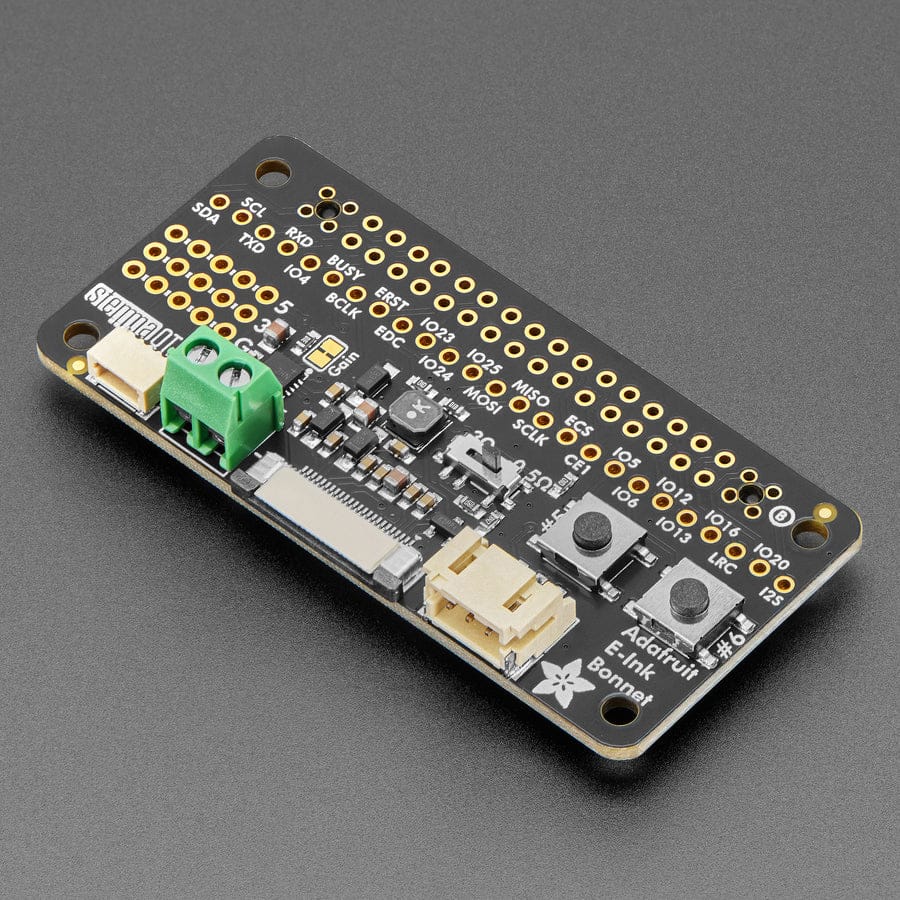
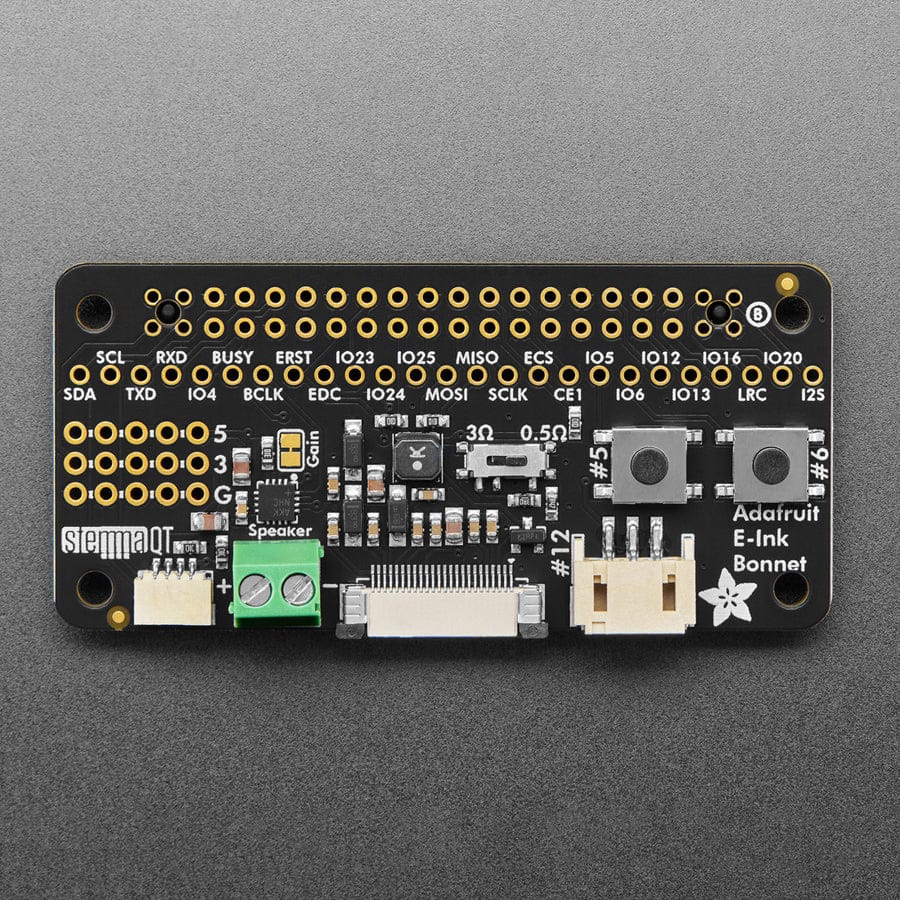
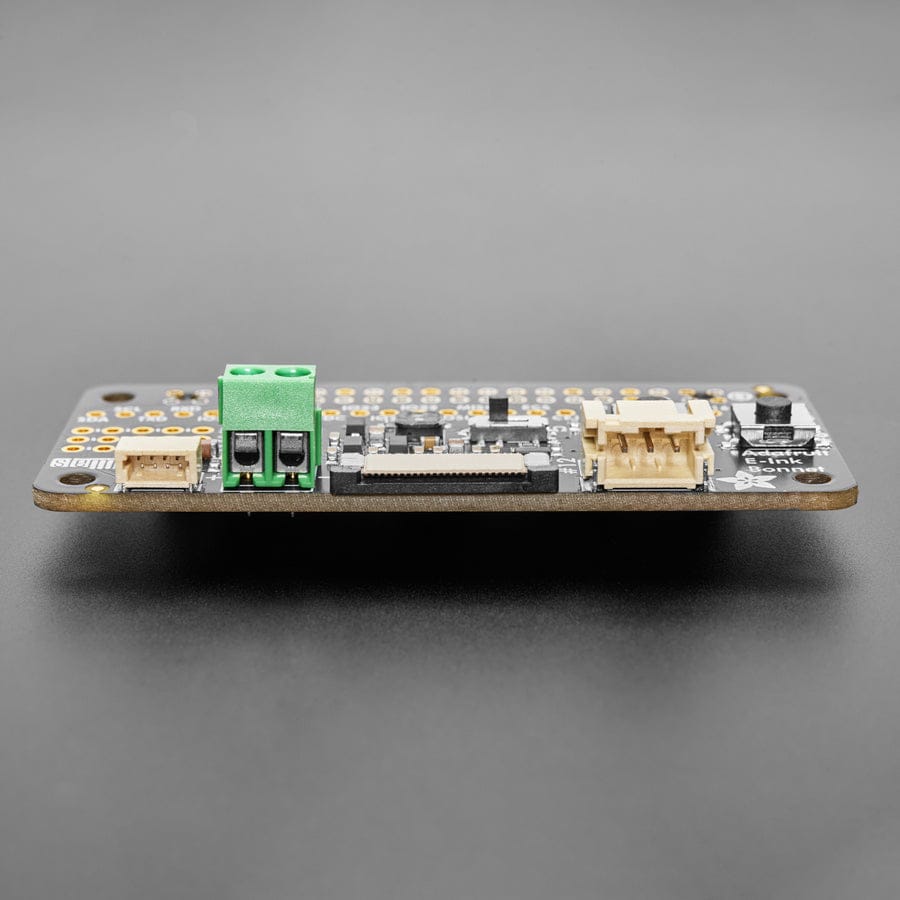
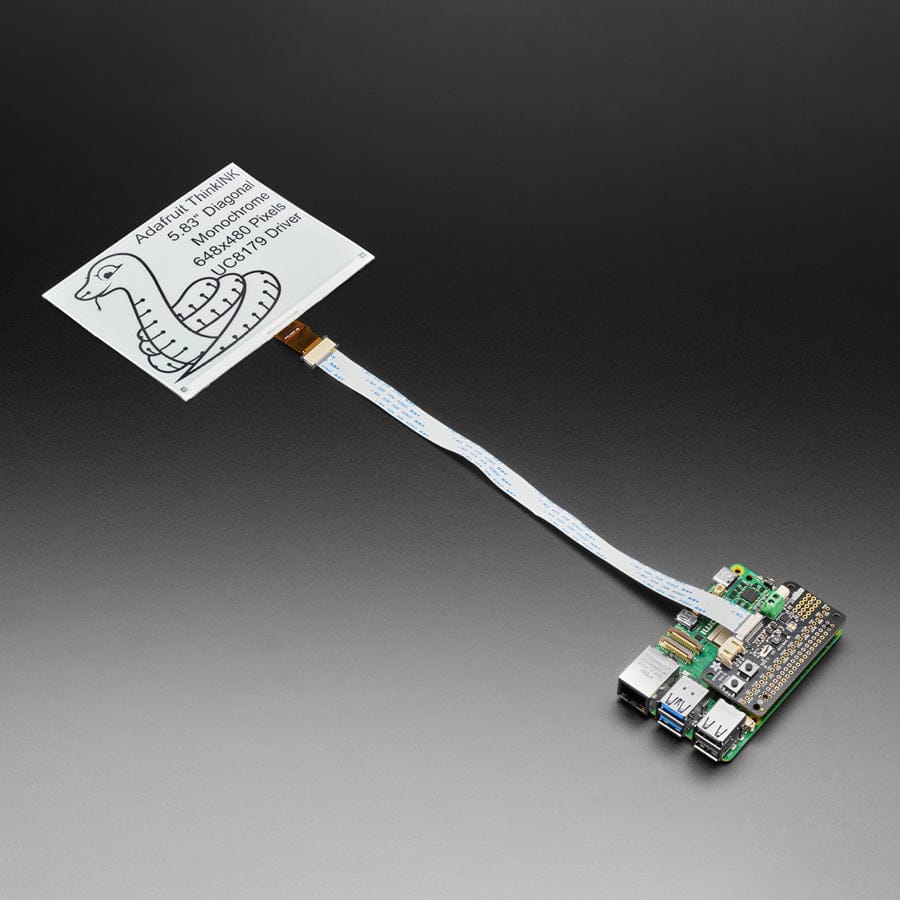
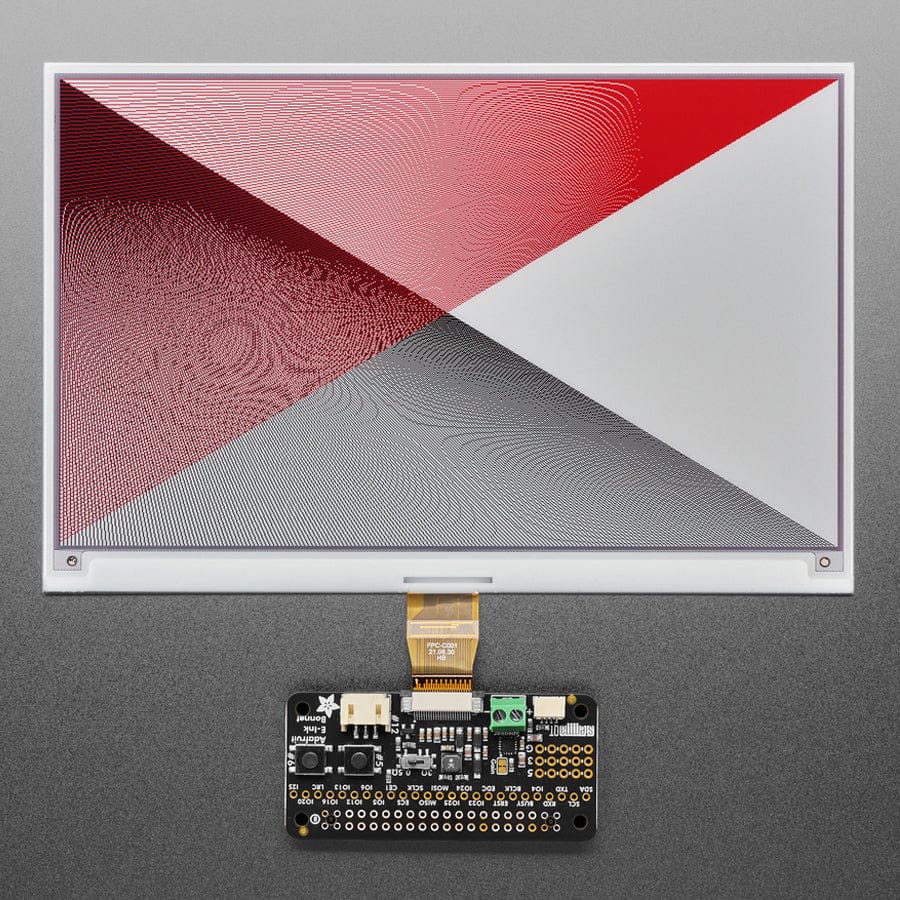
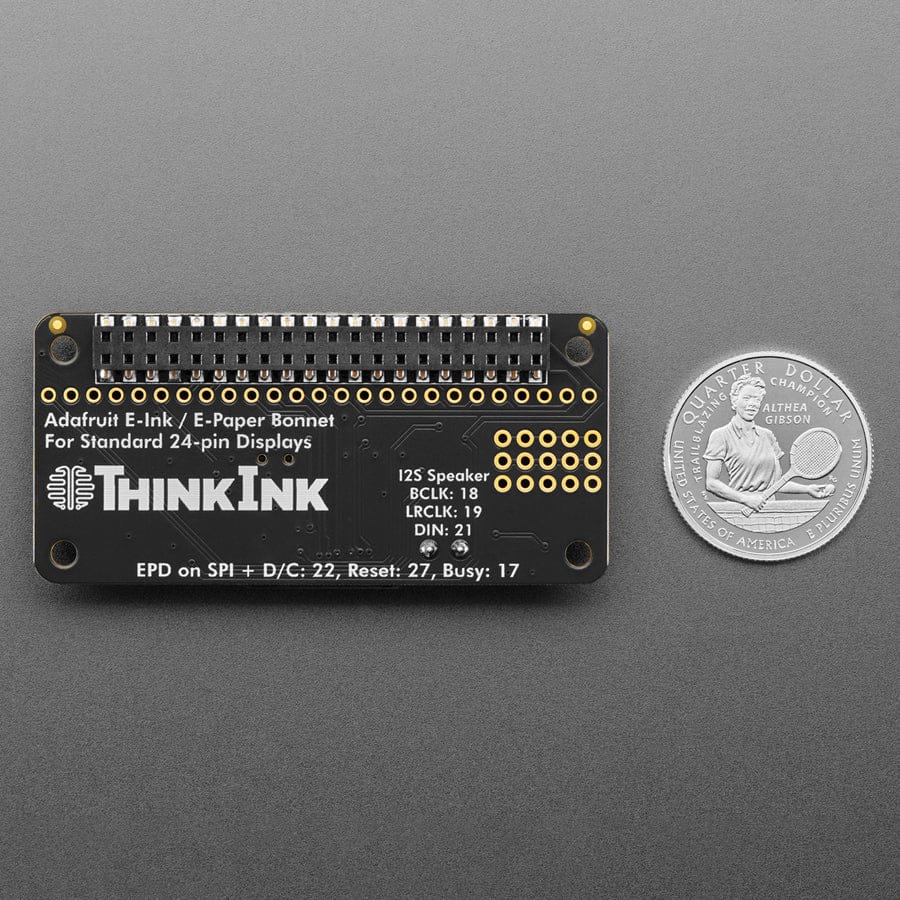
Login / Signup
Cart
Your cart is empty






Add an E-Ink display to your Raspberry Pi in seconds with this plug-and-play E-Paper Bonnet. It supports any standard 24-pin E-Ink display, includes two user buttons, a STEMMA QT I2C port, and a 3W I2S speaker driver for audio alerts. Works with all Pi models with a 2x20 GPIO header—just connect your display, install the Python library, and go.
Easy e-paper finally comes to Raspberry Pi, with this bonnet that's designed to make it a breeze to add any 'standard' pinout 24-pin flex-connector E-Ink display.
This add-on handles all the extra components needed to make E-Paper interfacing easy for Raspberry Pi and Pi-compatible boards. We even include extras like two user buttons, Stemma QT I2C port, and a 3W I2S speaker so you can also have audio playback. Insert your favourite E-Paper display to the connector, and you'll have a powerful Linux-powered display for your desk or wall.
Chances are you've seen one of those new-fangled 'e-readers' like the Kindle or Nook. They have gigantic electronic paper 'static' displays - that means the image stays on the display even when power is completely disconnected. The image is also high contrast and very daylight readable. It really does look just like printed paper!
Please note that this does NOT come with the raw display itself - we stock a wide variety of bare displays that will work great. Don't forget to verify that each display needs driver code to match the driver chip. For displays, we have examples in our E-Ink Python library you can use to craft your own project. Often the E-Paper display has a short cable, in which case we suggest one of our extender cables.
Comes completely pre-assembled and tested so you can plug it in and install our Python code! Works with any Raspberry Pi computer that has a 2x20 connector, such as the Pi B+, Pi 2, Pi 3, Pi 4, Pi 5, and Pi Zero (and any others that have a 2x20 connector!) For installing on Pi's where you need to clear a case, or you don't want it against the board, grab a 2x20 socket riser.
Since we had some space on the bonnet, we added a MAX98357 3W 4-8Ω speaker driver which has digital I2S input for great sounding audio. This makes it easy to add audio alerts and feedback to your E-Paper projects. Note you'll have to add a 4-8Ω speaker to the terminal blocks.
On the bottom, we have a Qwiic/STEMMA QT connector for I2C sensors and devices so you can plug and play any of our STEMMA QT devices.
To summarize, you will probably want some accessories to build a full project:
Please note: Raspberry Pi and display not included.







